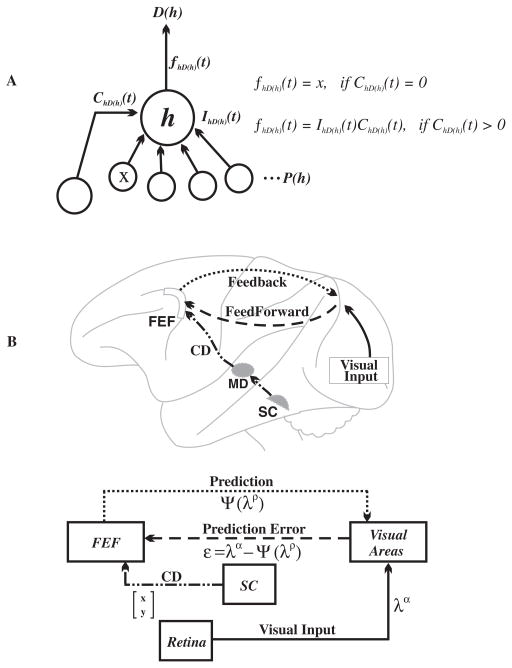Fig. 4.
Mechanics of the prediction map. (A) A centrepiece of the prediction map would be neurons with shifting receptive fields. These would serve as network hubs (h) that selectively route visual information fhD(h)(t) through the network based on the information IhD(h)(t) provided by upstream neurons P(h) and CD from the midbrain ChD(h)(t). This information would then be forwarded to neurons downstream D(h) that perform additional computations for the sake of prediction. Equations are explained in text. (B) Predictions Ψ(λρ) would exit the FEF as feedback that targets various areas of the visual brain. Errors ε=λα−Ψ(λρ) between the predicted visual input Ψ(λρ) and actual visual input λα would be then routed back to the FEF.

